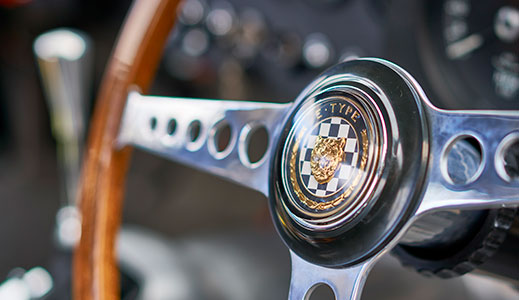First Time on Track
Ahead of its race debut at this year's Le Mans Classic, Stratstone's Jaguar Lightweight E-type had an extensive rebuild and a shakedown test at Donington Park.
Friday, 1st July 2016 - It's an open test day, and the Donington Park pit lane reverberates to the roar of racing engines. In amongst this smorgasbord of sounds - the rumble of classic sports cars, the wail of modern V8 track cars, and the whine of vintage touring cars - the distinctive throaty purr of the straight-six in Stratstone's Jaguar Lightweight E-type stands supreme.
This is the Lightweight E-type's first time on-track, following an extensive rebuild by Jaguar specialists Pearsons Engineering for the car's race debut at Le Mans Classic on July 8-10. At Le Mans, it will be driven by respected car journalist, racer and Top Gear presenter Chris Harris, but the man behind the wheel today is Gary Pearson.
Gary's father, John, started Pearsons Engineering in the 1960s, and ran one of the most successful Lightweight E-types - YVH 210, chassis no. 9 of the original 12 - for Jaguar ace Peter Sutcliffe. Gary's team have taken Stratstone's factory-fresh Lightweight E-type and adapted it to the same sort of racing specification that Sutcliffe's car would have had in the day.
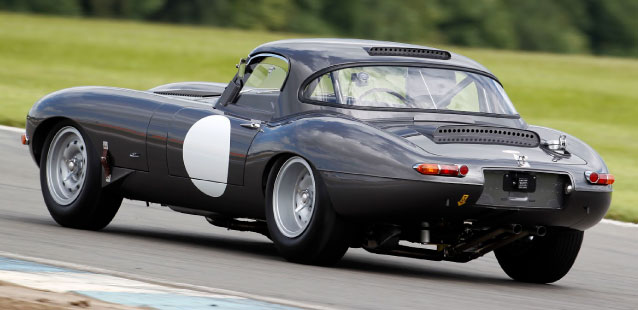
There has been plenty of change.
"We took a lot of the suspension from my own Lightweight E-type - chassis no. 11," Gary explains. "The suspension cradle was set up with the camber and toe-in geometry we want, and it's got the shock absorbers and springs we want, so it was quicker to just transfer it across. We've added heavier anti-roll bars as well."
"We've also trimmed the metal under the fenders. We don't want the tyre hitting the inside of the wheel arch when it runs over kerbs, which would burst the wing seam. That's an expensive repair. So, it's neater to trim away a little of the metal you can't see, which gives us an extra inch of ground clearance."
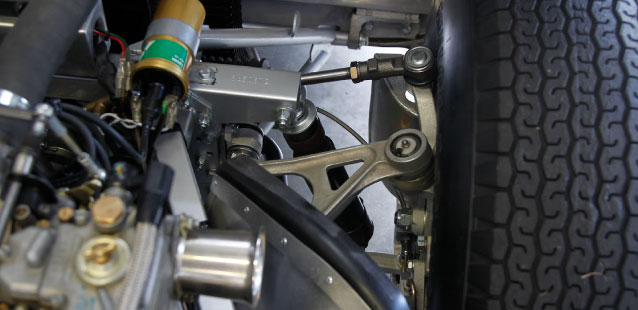
There has been a fair amount of work under the bonnet:
"The engine was tuned to be driveable low in the rev range," says Gary. "At 5,000rpm, though, the power falls off, so we replaced the factory-fit triple 45DC03 Weber carburettors with 48mm Webers. It was important to test those at Donington, as it's our only chance before Le Mans."
There's still more change to come:
"At Le Mans, we'll run a different exhaust," says Gary. "The factory-fit exhaust has a standard-size bore, with two hefty silencers. Instead, we'll run a system that looks like the standard exhaust, but has a larger diameter bore that breathes better and works with the larger carburettors to give the engine more edge at the top end of the rev range."
"We'll also swap the throttle linkage, which is fine for the road, but has a bit of play. You can't heal-and-toe as neatly, and it gets stiff at the far-end of the travel - so you can't feel what's happening when you're almost at full throttle out of a corner. We'll put in a cable arrangement for Le Mans."
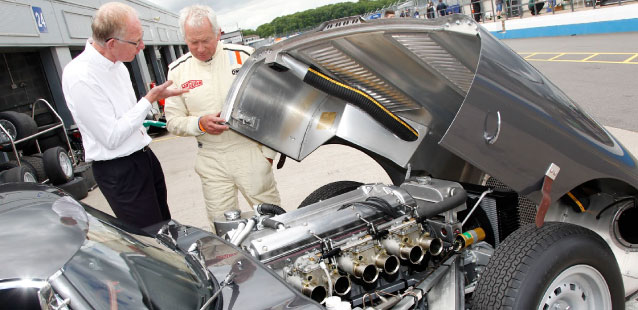
Although this 'Frankensteining' of a brand-new Lightweight E-type may seem like anathema to purists, it reflects how the cars evolved back in the day. As such, there's no true blueprint for how a racing Lightweight E-type was prepared for the track.
"The 'missing six' Lightweight E-types have been built beautifully by Jaguar, exactly as they would have left Brown's Lane in 1963," says Gary. "When you're working on the car it feels just like it's from the 1960s. They've done a wonderful job. That works against the car when it comes to racing against its period rivals, though."
In the day, teams evolved their cars to beat the competition. When Graham Hill drove for Coombs in Lightweight E-type 4WPD, he borrowed a set of 15-inch wheels from his BRM team for more grip, and that's how they started. A couple of years ago, we restored Peter Sutcliffe's Lightweight E-type YVH 210 to period condition, as it had evolved a lot over the years. We had to pick one point in time and say that's the spec, otherwise you'd restore it to how it left the factory in 1963, and it would look nothing like how it raced at the peak of its success.
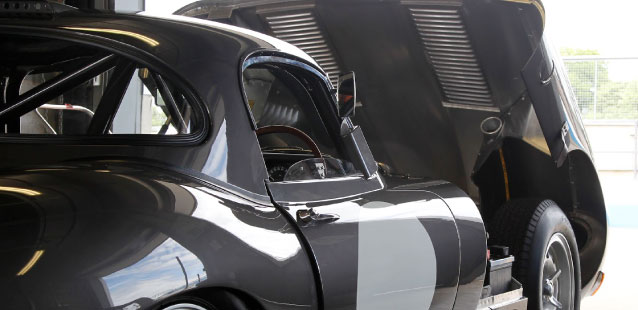
Stratstone's Lightweight E-type is a special car in its own right. But it's going out to compete against some well-developed and well-driven E-types that race week-in, and week-out. We didn't want to pull things to pieces, and drill holes in the car to turn it into a hot-rod, because that's not what this car is all about. What we've done though, is create a car that's loyal to period, and very driveable.
"As Stratstone's Lightweight is still 'standard', compared to how Lightweights evolved, we can't run it quite as low. That means it doesn't have the ultimate grip of my own Lightweight. It rolls in corners a little more and dips a bit more under braking, but we've stiffened the shock absorbers so it has a nice, neutral balance. I've really enjoyed driving it this afternoon, and I'm sure Chris will love driving it too."
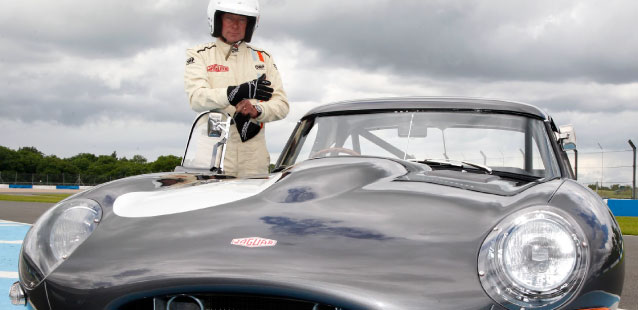
Discover More
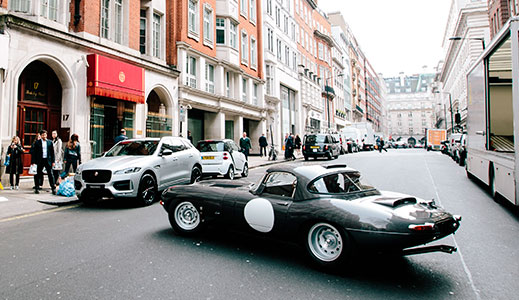
A New Home In Mayfair London
The Jaguar Lightweight E-type arrives at Stratstone's London showroom
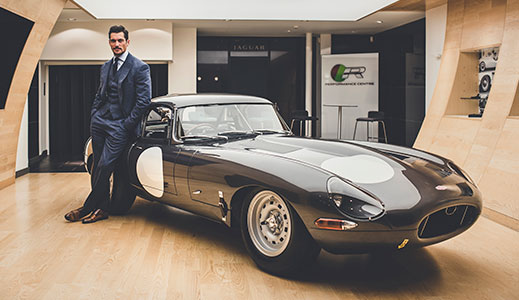
David Gandy Visits the E-type
Britain's leading male model talks about his passion for style and cars
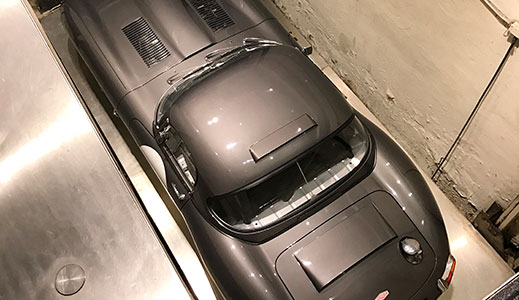
Exclusive Appearance in Mayfair
YouTube influencer and car enthusiast Shmee150 visits the Lightweight E-type

